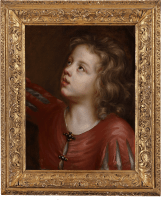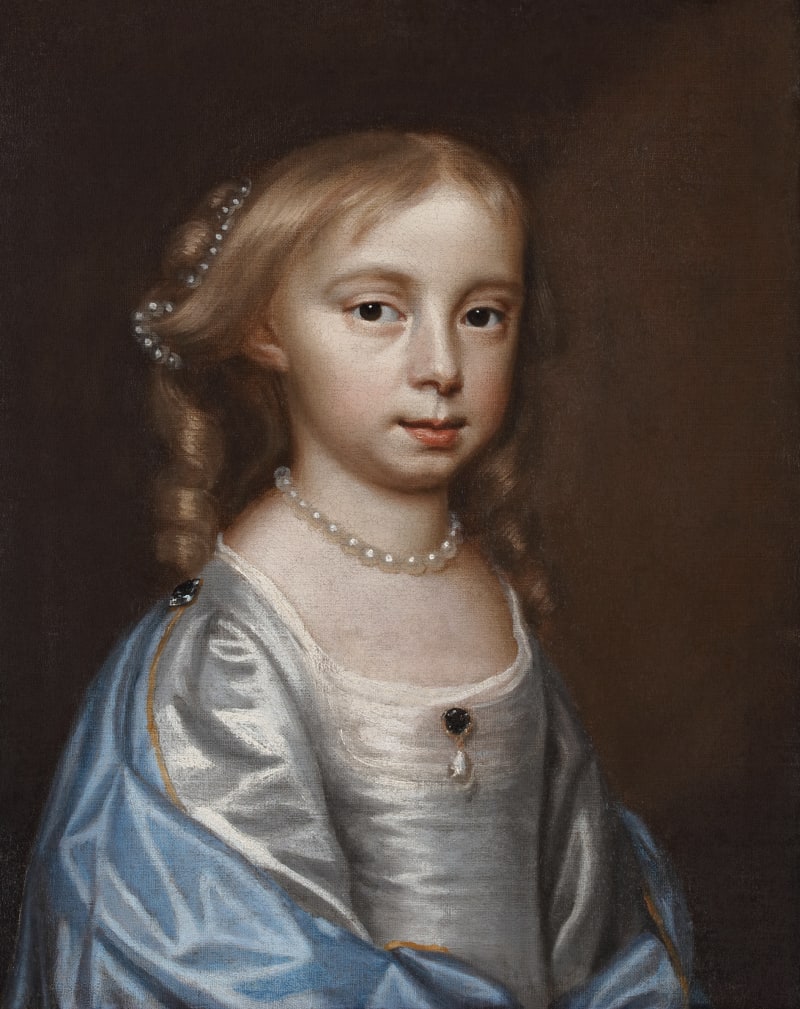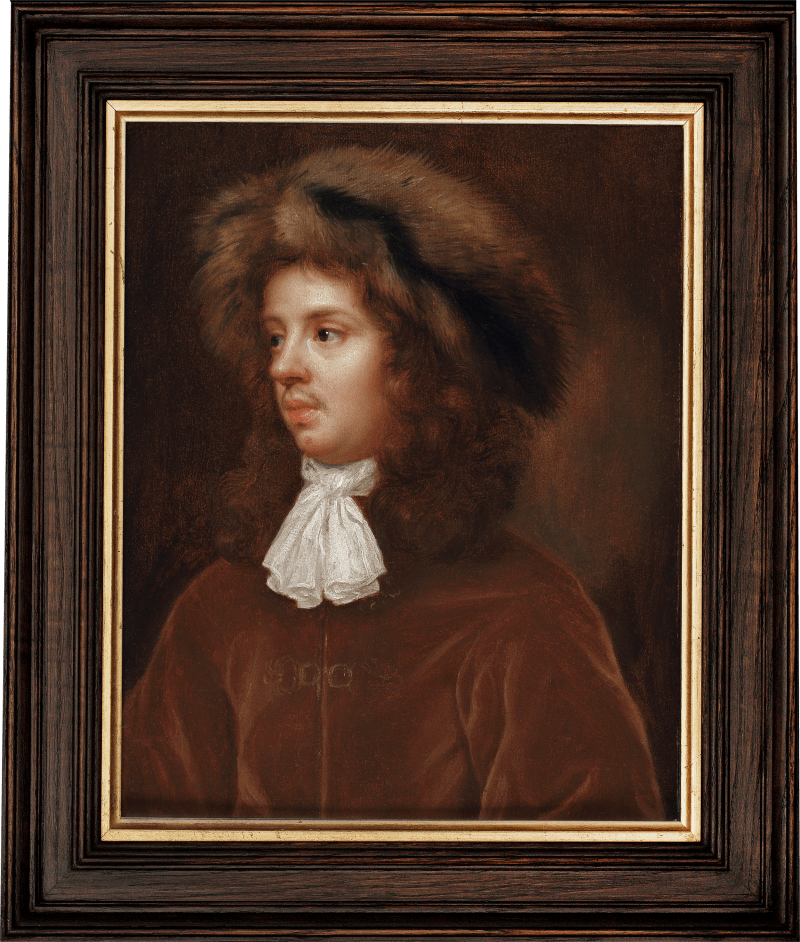This characteristically sensitive head study of Beale’s son Bartholomew was painted in the early 1660s, when the family lived in Hind Court, just off Fleet Street. Beale is not known to have received formal paid commissions at this date, but we do know that she was actively painting portraits of friends and family. This is one of around twelve surviving studies of Bartholomew painted at this date and similar examples can be found in public and private collections worldwide.[1] These works are notable for their immediacy and rank amongst the most affecting studies in oil in British art of the period.
In Hind Court, Charles maintained an office, while Beale kept a ‘paynting room’, which, based on their expense records from that time, was amply supplied. Items of note include ‘pencills, brushes, goose & swan fictches’ and ‘quantities of primed paper to paint on’.[2] While paper was a cheaper alternative to canvas, it was still expensive, which suggests...
This characteristically sensitive head study of Beale’s son Bartholomew was painted in the early 1660s, when the family lived in Hind Court, just off Fleet Street. Beale is not known to have received formal paid commissions at this date, but we do know that she was actively painting portraits of friends and family. This is one of around twelve surviving studies of Bartholomew painted at this date and similar examples can be found in public and private collections worldwide.[1] These works are notable for their immediacy and rank amongst the most affecting studies in oil in British art of the period.
In Hind Court, Charles maintained an office, while Beale kept a ‘paynting room’, which, based on their expense records from that time, was amply supplied. Items of note include ‘pencills, brushes, goose & swan fictches’ and ‘quantities of primed paper to paint on’.[2] While paper was a cheaper alternative to canvas, it was still expensive, which suggests that Beale was already taking her art seriously and had her husband’s full support.[3] Given the fragility of paper, many of her studies from this date have not survived; those that did have been laid onto panel or canvas, as seen here. The present work originally consisted of just the sitter’s head and neck set against a dark background; the costume was added by another hand.
In the 1670s Bartholomew and Charles assisted their mother in her studio, painting draperies and stone cartouches. Unlike Charles, however, Bartholomew decided against becoming an artist and instead pursued a career in medicine.
[1] Similar studies of Bartholomew can be found in the following museum collections: Tate, London, T13245 and T13246; The Huntington Art Museum, San Marino CA, 2000.14; Yale Center for British Art, New Haven CT, 2016.24. Other examples have appeared on the market: Sotheby’s, London, 4 July 2019, lot 175, and 7 December 2023, lot 45; Reeman Dansie Auctioneers, Colchester, 27 January 2021, lot 454. A further example was previously with Andrew Clayton Payne and is now in a private collection.
[2] Charles Beale, quoted in Vertue Note Books, p. 174.
[3] For further insights into the cost and suitability of paper as a support, see Draper 2020, p. 91.













